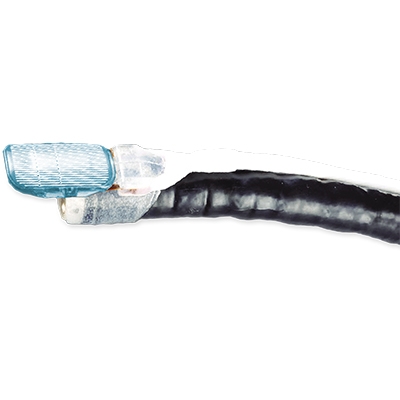
Biorad RF Ablation Catheter – Esophageal
CONTROLLED ABLATIVE TREATMENT
It is intended for use in coagulation of bleeding and non-bleeding sites in the gastrointestinal tract, including but not limited to connective tissue-confined Esophageal Squamous Cell Neoplasia and Barrett's Esophagus.
• Presence of dysplasia in Barrett's esophagus Cases with non-dysplasia and low-grade dysplasia
• Early squamous cell carcinoma of the esophagus (T1m2),
• Moderate intraepithelial neoplasia (MGIN)
• Used in findings defined as high-grade intraepithelial neoplasia (HGIN)
The catheter is used to deliver RF energy to the tissue within the gastrointestinal tract.
It is attached to the distal end of an endoscope and placed directly into the esophagus under visualization.
Directed to targeted gastrointestinal tissue it provides energy transmission by applying it to the tissue with the help of an endoscope.
With ADVANCED RF ABLATION TECHNOLOGY, the system is designed to remove esophageal epithelium in a short endoscopic procedure that is well tolerated by patients. The ability to deliver controlled amounts of ablative therapy to diseased tissue significantly reduces the risk of complications.
The RF ablation system provides a uniform and controlled ablative therapy at a consistent depth. It can remove the diseased tissue layer while preserving the underlying healthy tissue. This allows new, healthy tissue to regrow within eight weeks. Disposable delivery catheters can be used with circumferential or focal. It is designed to work in harmony to achieve a superficial ablation depth.
The focal RF Ablation catheter allows it to provide primary therapy for short to medium-length segments of noncircular Barrett's esophagus, or to provide secondary therapy after balloon catheter ablation.
Provides easy access to the upper gastrointestinal tract
Allows positioning within the esophagus and gastroesophageal junction
Allows direct viewing of the electrode during the procedure
Uses standard endoscopic technique
The articulating electrode platform moves 2D from left to right and front to back to ensure tissue contact.
Features
- Bipolar RF Energy
- Flexible Catheter Tip Construction
- Optimal Apposition
- Percutaneous Administration
- Easy Operation
- Energy density 12J/cm2
- Optimal Apposition
Features
- Bipolar RF Energy
- Flexible Catheter Tip Construction
- Optimal Apposition
- Percutaneous Administration
- Easy Operation
- Energy density 12J/cm2
- Optimal Apposition